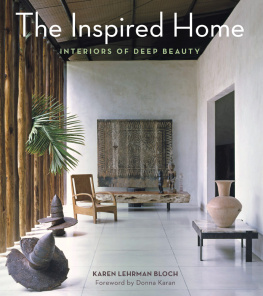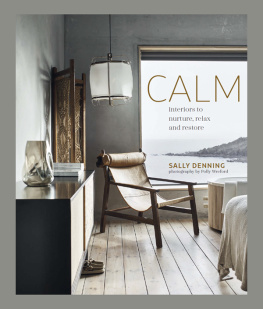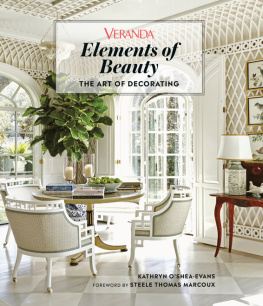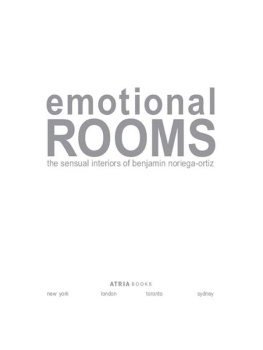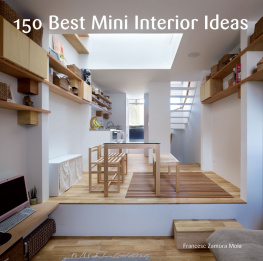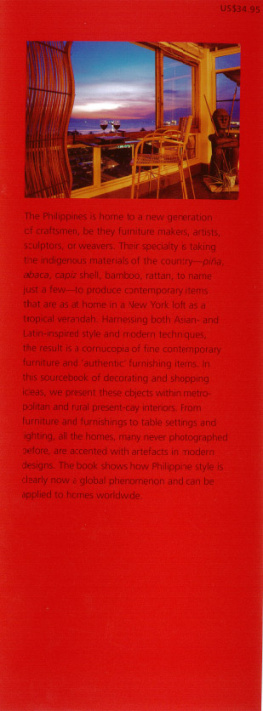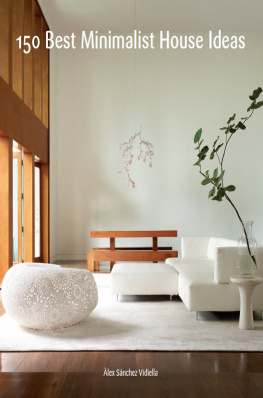
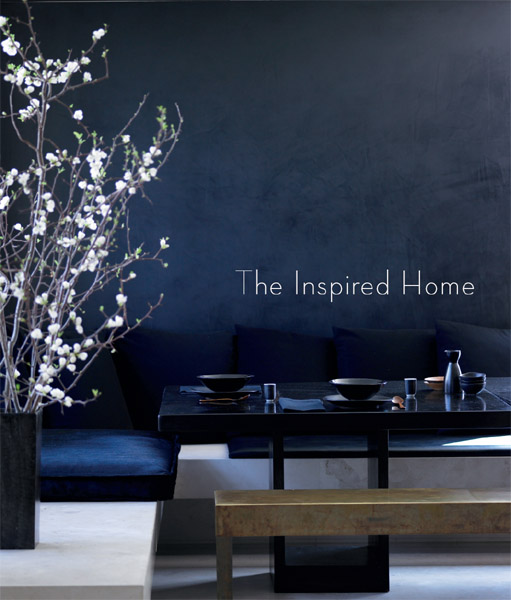
Donna Karans dining room.

The entrance to Luisa Beccarias flowers room, where her family makes vases, with an old painted bench.
For my mother, who understood true beauty and its many gifts
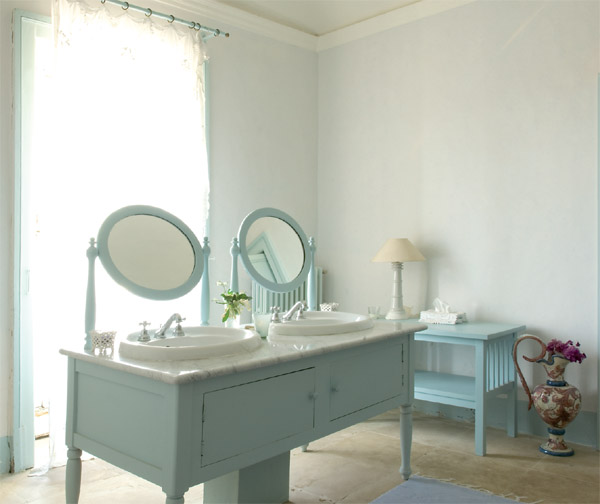
Luisa Beccaria designed the furniture in this tone-on-tone bathroom.
What is a soulful interior? How do you create a home that feels like a retreat, a sanctuary, every time you enter? How do you find the calm within the chaos?
For me, a soulful interior is one in which I am completely relaxed, completely myselfwhere my mind, body, and spirit connect. A space and a place that feels open, that allows you to breathe and welcomes the light. A space that is infused with sensualitynatural woods, stone, texturesand filled with beautiful artifacts and artisan wares that tell the rich story of diverse cultures and people.
For me, a soulful interior is an extension of the self, an expression of creativity, a true invitation to experience the integration of the mind, body, andyessoul.
I think we are much more aware today of how our homes and offices can help us to feel centered, energized, creative: places to pause from the never-ending movement of life so that we may become grounded and focused once again. I think we also understand that each and every one of us canactually, mustcreate this for ourselves; no one can really do it for us.
In fashion we have learned to mix uptown with downtown, sleek and texturedto create a personal style of individual pieces. Similarly, in our homes we have begun to hand-select, to curate individual pieces to create an interior that speaks to us on many levels.
Through the process we discover who we areand perhaps more important, who we are becoming. Creating a home is a journey filled with pleasure.
I believe in integration, in connecting the dots. Elegance and authenticity are not mutually exclusive; you do not need to give up beauty to be soulful. In fact, quite the contrary. I believe that we can create incredible changein ourselves, in the worldthrough beauty.
Today we can create interiors with soul filled with the beauty of every culture, empowering both the artisans of those cultures and ourselves in the process.
DONNA KARAN

The open-plan bath and dressing room in Donna Karans home is rich with sensory experience.
Most of us can spend entire days going in and out of rooms that have zero effect on us. We may notice a painting here, a sofa there; we may even make a mental note of a particular floral arrangement or wall color. But the interior as a whole is instantly forgotten.
Sometimes, though, we enter a buildingperhaps a museum, a house of worship, or even a grand hoteland the effect is immediate and profound. The stresses of the day seep quickly from our consciousness. Our shoulders relax; they may even straighten a bit. We dont just feel good; we feel inspired. We dont just want to stay; we want to move in.
The idea that our surroundings can have a profound effect on our minds, bodies, and spirits is nothing new. Throughout history, buildingsespecially those with a civic or religious aimhave been created with the idea that design has the capacity to touch us deeply, to elevate us both emotionally and spiritually.
It has not typically been a concept, however, that has been tied to our homes. Our interiors, the thinking has been, need to be decorated, most often by a specific recipeModern or traditional; English or French; sleek or bohemian. Choose your dcor, and a formulaic response is produced. You should be happy with your home, yes, but happy that you are able to achieve a particular look, secure in the knowledge that you are beyond reproach in the decorating department.
Unfortunately, the decorated home doesnt always feel particularly good to live in. In fact, pristine period rooms, Botoxed Modernist boxes, or high-glam designer confabs can actually make us feel bad. When life throws us that inevitable curveball, living in these environments can make us even more depressed: we cant live up to their gloss, their sheen, their perfection.
In recent years there has been a move toward the undecorated homeditching the rigid thematic approach and exploring the idea of combining contemporary pieces with a variety of antiques. This has been a great first step, and it has led to the rediscovery of artisanal work and global artifacts as well as the creation of some breathtaking interiors. But because this move has not yet been fully grounded, because it hasnt been linked to the idea of emotional and spiritual uplift, the result has often been haphazard and the impact not what it could be.
Truly connecting with our homes can have an extraordinary effect on our psyches. It can calm us, strengthen us, help us put our values in order. Our homes can offer continual sustenance by making us feel a little less isolated, a little more connected to something larger than ourselves. Just as weve learned that the clothes we wear, the people we surround ourselves with, even the products we use can have a tremendous effect on our happiness, so too can the environments we live in.
A home that works is deeply restorative and can even embolden and inspire. It is not just a physical space to put our things or a shelter to protect us from the elements. It is a place so steeped in beauty that it has the capacity to transform uswhich in turn creates a home of even deeper beauty. So how do we create this? How do we design an interior with soul? As you will see from the variety of stories in this book, there is no specific formula, no rule book. In fact, the path (by definition) is going to be different for each of us. Yet there is an underlying set of principlesdrawn from both nature and the philosophy of aestheticsthat can provide a useful guide, a guide so compelling it can enrich all aspects of our lives.
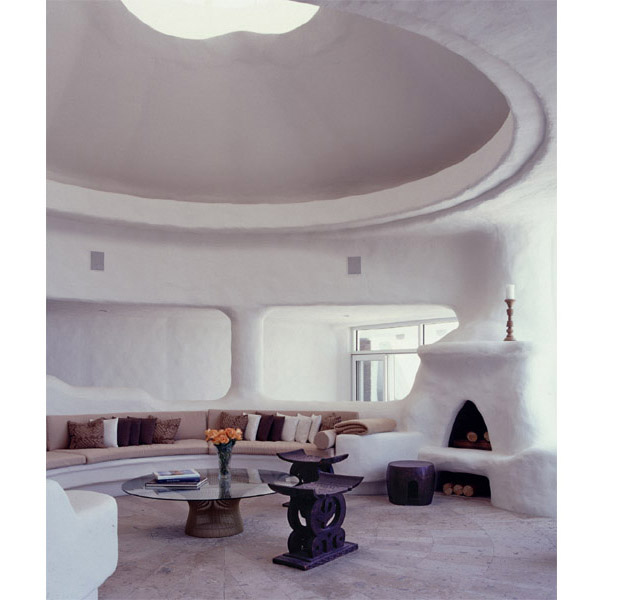
The living room of the SPI Design home.

Glass bell jars and Protea flowers on a sideboard cabinet in Leoni Smits house.
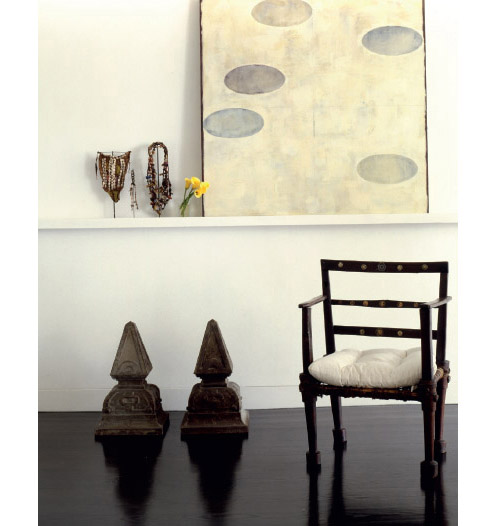
In this Southampton home designed by Vicente Wolf, a picture ledge supports a contemporary painting by Andrea Shapiro, balanced by an Ethiopian chair and architectural elements.
HOME AS INSPIRATION, NOT SHOWPIECE
We begin by understanding and accepting the idea of creating a home for ourselves, as part of our personal space. We have been taught to see our homes as showpiecesto think that this sofa or that painting says something about me. We need to be able to say, This piece touches me, moves me, inspires me.
Next page
